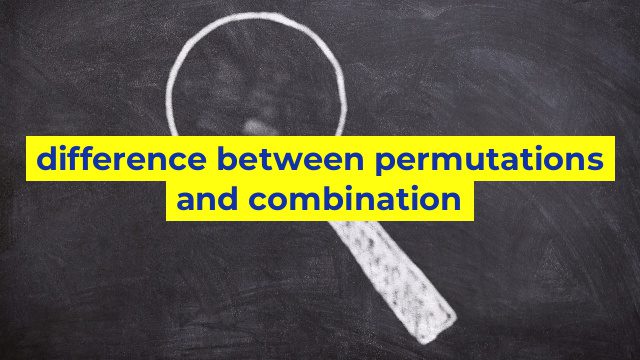Understanding the Difference between Permutations and Combinations
Combinations and permutations can be a bit confusing for many people, but it is essential to understand the difference between the two concepts. They often come up in mathematics, statistics, and even computer science. In this article, we will explain what permutations and combinations are, why they are important, and how to distinguish between them.
What Are Permutations?
A permutation is an arrangement of objects in a specific order. It is often used when the order of the elements matters. For example, consider a deck of playing cards. There are 52 cards in a deck, and the order in which they are arranged matters. If we draw two cards, the number of different possible combinations that can be obtained is 52 x 51, since we are drawing without replacement. In other words, the first card has 52 options, and for the second card, there are only 51 options left. Therefore, the total number of possibilities is 52 x 51 = 2,652.
What Are Combinations?
On the other hand, a combination is a collection of objects where the order does not matter. For example, consider a group of five people. The number of possible combinations that can be formed from the group is calculated using the formula n!/r!(n-r)!, where n is the number of objects, and r is the number of objects chosen. In other words, it is the number of ways to choose r objects from a set of n objects. Therefore, for our group of six people, there are 15 possible combinations, since 6!/5!(6-5)! = 6.
The Difference between Permutations and Combinations
The key difference between permutations and combinations is that in permutations, the order matters, while in combinations, it does not. Permutations focus on the arrangement of the objects, while combinations focus on the collection of objects. So, if you are looking to arrange objects in a specific order, you use permutations. On the other hand, if you are just interested in forming a group of objects, you use combinations.
In conclusion, it is essential to distinguish between permutations and combinations because they have different applications and formulas. Understanding the difference will help you solve problems in various fields, including probability, statistics, and computer science, among others. So, next time you encounter a problem that involves arranging or grouping objects, remember to identify whether you need a permutation or combination.
Table difference between permutations and combination
| Permutations | Combinations |
|---|---|
| Order matters | Order doesn’t matter |
| The number of ways to arrange a set of elements | The number of ways to select a subset of elements from a set |
| Formula: n! / (n-r)! | Formula: n! / (r! * (n-r)!) |
| Example: The number of ways to arrange 3 books on a shelf out of 5 books | Example: The number of ways to select a committee of 3 people from a group of 5 people |
